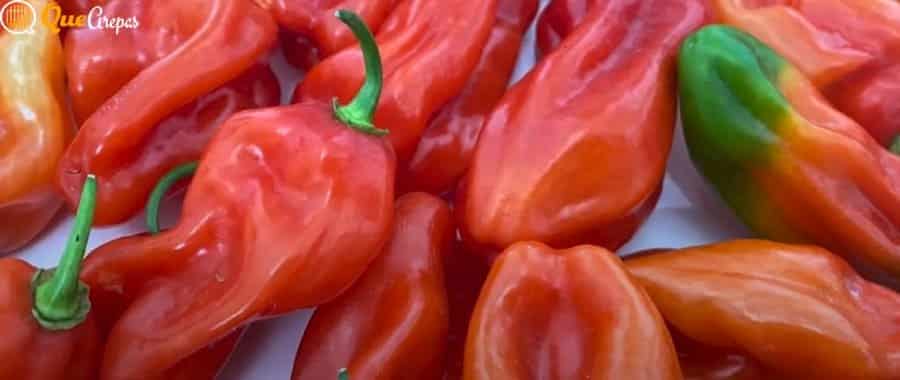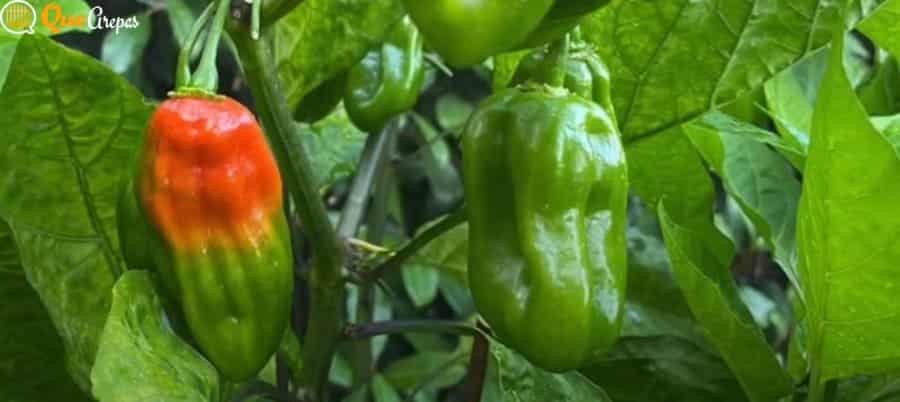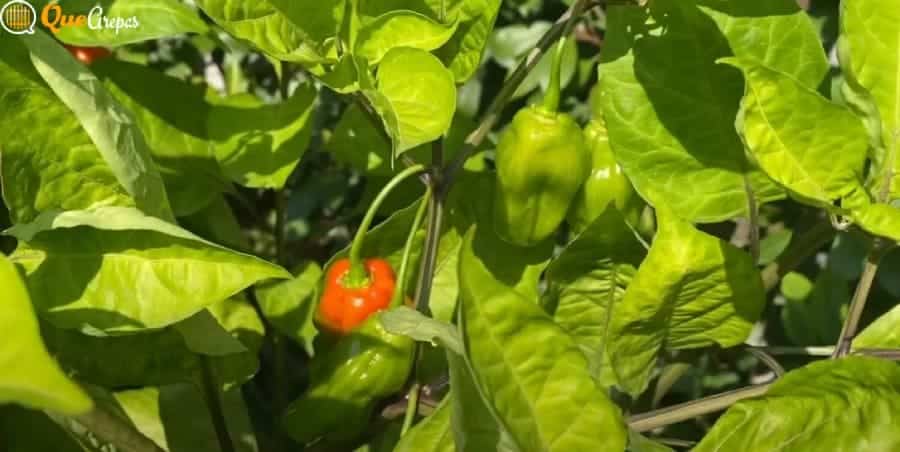Discover the unique flavor of Sweet Pepper and its diverse uses in Venezuelan cuisine.
The Venezuelan Sweet Pepper is a fundamental ingredient in Venezuelan cuisine, known for its unique flavor and mild sweetness. It is a variety of bell pepper that is distinguished by both its colorful appearance and fragrant aroma. Below, we will further explore the origin and distinctive characteristics of this fascinating ingredient.

Corn flour, Garlic, Cilantro, Auyama, Ajoporro, Oats, Avocado
Originally from Central America and the Caribbean, the Venezuelan Sweet Pepper has become an essential element in the gastronomy of Venezuela. Its cultivation has spread throughout the country, from the mountainous regions to the tropical coasts. It is believed to have been introduced in Venezuela during colonial times, and since then it has been widely used in traditional cuisine.
One of the most distinctive characteristics of Venezuelan Ají Dulce is its flavor. Unlike other hot peppers, Ají Dulce has a very mild or even no heat. Instead, it offers a sweet and fruity flavor, with subtle hints reminiscent of tropical fruit. This combination of sweetness and aroma makes it a versatile ingredient that can add depth and complexity to a wide variety of dishes.
As for its appearance, the Venezuelan Sweet Pepper comes in a range of vibrant colors, ranging from light green to deep red, through yellow and orange. Its shape also varies, from elongated and narrow to round and convex. These visual characteristics make Ají Dulce an attractive and decorative ingredient in the kitchen, in addition to being tasty.
It is important to note that Sweet Chili should not be confused with Hot Chili, as they are two different varieties. While the Hot Pepper is known for its intense heat and spiciness, the Sweet Pepper is characterized by its mildness and sweetness. This distinction is fundamental when using Ají Dulce in traditional Venezuelan recipes, as its mild flavor enhances dishes without overwhelming the other flavors.
We recommend the recipe for Arepa with Carne Mechada (meat and sausage)
Properties and benefits of Venezuelan Sweet Pepper
Aji Dulce is not only appreciated for its delicious flavor and aroma, but it also offers several health-promoting nutritional properties. Below, we will explore the properties and possible benefits of this fascinating ingredient in Venezuelan cuisine.
Venezuelan Sweet Pepper is an excellent source of vitamins and minerals. It contains vitamins A, C and E, which are powerful antioxidants that help protect the body against free radical damage and strengthen the immune system. It is also rich in minerals such as potassium, magnesium and iron, which are essential for the proper functioning of the body.
One of the most prominent components of Ají Dulce is capsaicin, a compound responsible for the heat in other peppers, but in Ají Dulce it is found in very low or even absent concentrations. Although capsaicin is not present in large amounts in Ají Dulce, it has been shown to have anti-inflammatory and analgesic properties, and may help relieve pain and promote cardiovascular health.

In addition to its nutritional properties, Ají Dulce can also offer health benefits. Some of them include:
- Healthy digestion: Venezuelan Sweet Pepper contains dietary fiber, which promotes a healthy digestive system and helps prevent problems such as constipation.
- Antioxidant properties: Vitamins A, C and E present in Aji Dulce act as antioxidants, protecting the body's cells against oxidative stress and free radical damage.
- Immune system strengthening: Vitamin C present in Ají Dulce is known for its role in strengthening the immune system, helping to prevent disease and promoting overall good health.
- Anti-cancer potential: Some studies suggest that compounds present in peppers, including Ají Dulce, may have anti-cancer properties and help prevent the development of certain types of cancer.
Remember to visit the article about Nutella Tequeños.
Culinary Uses of Sweet Chili Peppers
Venezuelan Sweet Pepper occupies a prominent place in Venezuelan cuisine, as it is used in a variety of ways to enhance the flavor of traditional dishes. Below, we will explore some of the most common culinary uses of Ají Dulce in Venezuelan gastronomy.
Essential spice in Venezuelan cuisine
Venezuelan Sweet Pepper is considered an essential condiment in Venezuelan cuisine due to its characteristic flavor and fragrant aroma. It is used in a wide variety of traditional dishes to add a sweet and aromatic touch. Whether raw, finely chopped or mixed with other ingredients, Ají Dulce adds a distinctive flavor that complements and enhances the other flavors of the dish.
In dishes such as Pabellon Criollo, an emblematic Venezuelan dish, Ají Dulce is used as one of the key ingredients to give it that authentic flavor. It is also added to soups, stews and casseroles to provide a delicate aroma and mild flavor that balances the more intense flavors of other ingredients.
Base for sauces and sauces
Venezuelan Sweet Pepper is a fundamental component in the preparation of Venezuelan sofritos and sauces. In sofrito, which is an aromatic base for many dishes, it is used as one of the main ingredients along with onion and garlic. Ají Dulce provides sweetness and a distinctive flavor that blends with the other ingredients, creating a rich and tasty flavor base.
Ají Dulce is also used to prepare various Venezuelan sauces, such as guasacaca. This sauce based on avocado, cilantro, garlic and Ají Dulce is a classic accompaniment to grilled meats, arepas and empanadas. The Ají Dulce adds a sweet and mild touch, balancing the flavors and bringing freshness to the sauce.
Accompaniment in rice and grain dishes
Venezuelan Ají Dulce is also an excellent accompaniment to rice and grain dishes, such as arroz con pollo, caraotas (black beans) and arroz con coco (rice with coconut). Adding finely chopped Ají Dulce to these dishes adds a touch of sweetness and aroma, elevating the flavor of the beans and adding complexity to the dish.
To incorporate Ají Dulce in these dishes, it is recommended to chop it finely and add it to the sauce along with the other ingredients. In this way, it blends with the flavors and aromas of the preparation, contributing its soft and sweet taste to each bite.

Tips for buying and storing Venezuelan Sweet Pepper
Venezuelan Sweet Pepper is an essential ingredient in Venezuelan cuisine and other Latin American dishes. Here are some useful tips for buying and storing Ají Dulce, ensuring its freshness and quality:
- Sweet Pepper Selection:
- Look for sweet peppers that have a bright and colorful appearance. They should have smooth, firm skin, with no wrinkles or blemishes.
- Choose sweet peppers that are intact, with no signs of deterioration or damage such as bruises or scratches.
- If possible, choose sweet peppers with fresh green stems, as this indicates that they are more recent.
- Purchase of Sweet Pepper:
- Ají Dulce can be found in supermarkets, local markets or stores specializing in Latin American products.
- If you can't find fresh Ají Dulce, you can also look for frozen or canned options.
- Storage of fresh Venezuelan Sweet Pepper:
- Ají Dulce is best when used fresh, but if you need to store them, you can store them in the refrigerator.
- Wrap each Venezuelan Sweet Pepper individually in paper towels or place them in a perforated plastic bag to allow them to breathe.
- Store them in the vegetable drawer of the refrigerator, where the temperature and humidity are suitable for preservation.
- Fresh Ají Dulce can last up to a week in the refrigerator, but it is advisable to consume them as soon as possible to enjoy their optimum flavor.
- Conservation of frozen or canned Sweet Chili:
- If you buy frozen Venezuelan Sweet Pepper, follow the instructions on the package to store it properly in the freezer.
- If you purchase canned Venezuelan Sweet Pepper, be sure to check the expiration date and store it in a cool, dry place until use.
We recommend other articles about Venezuelan food ingredients.
Frequently Asked Questions
What is the difference between Sweet Pepper and Hot Pepper?
Ají Dulce and Ají Picante are two varieties of chili peppers with different characteristics. Aji Dulce is mild and slightly sweet, providing flavor without intense heat. On the other hand, hot peppers are known for their high level of heat, varying in intensity depending on the species. It is important to keep this difference in mind when selecting ingredients for your recipes.
Where can I find Ají Dulce outside Venezuela?
If you are looking for Ají Dulce outside Venezuela, you can go to Latin American or international food stores. These establishments usually have a section dedicated to Latin American products, where you can find fresh, frozen or canned Ají Dulce. You can also explore online options to purchase Ají Dulce and have it shipped to your location.
Can Venezuelan Sweet Pepper be substituted for another ingredient if it is not available?
If you can't find Ají Dulce, you can try substituting it with other sweet peppers of similar flavor, such as Italian bell pepper or bell bell pepper. Although they will not be identical to Ají Dulce, they can provide a mild, sweet flavor to your dishes. Adjust the amount according to your personal preference and keep in mind that the result may vary slightly.
If you want to know other articles similar to Discover the unique flavor of Sweet Pepper and its diverse uses in Venezuelan cuisine. you can visit the category ingredients.

